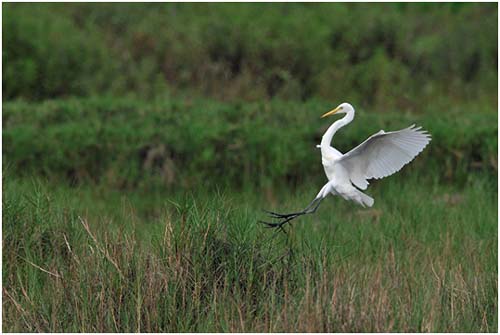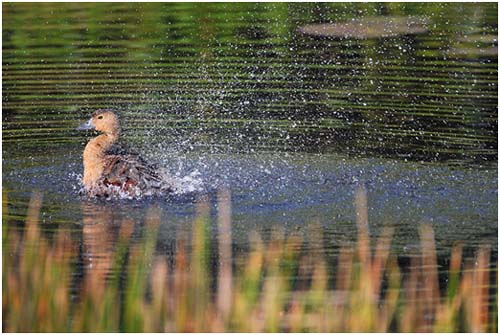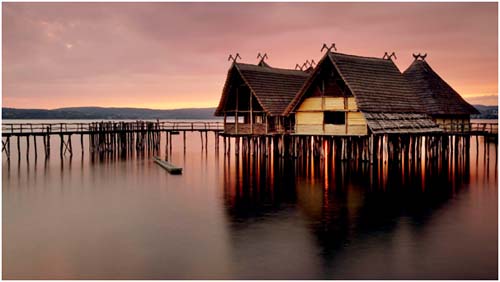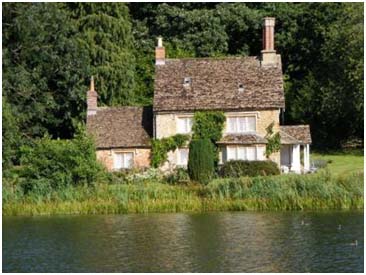The Sippi Ghat Tragedy OR Loosing Sippi Ghat Again
Wetland. The very word has quite the opposite effect on environmentalists as opposed to developers. Places like swamps and bogs that seem unfit for human habitation,have been witnessing "reclamation" and these magnificent ecosystems are being transformed into land usable for construction. What beauty and natural utility is being lost in the process! These rich, usually soggy places provide critical habitat for numerous species, they help clean our water, control floods, and provide plenty of food for humans.
“Development is essential. Doing it in a planned and structured manner with sensitivity is imperative.” For a development to be sustainable, it is essential to keep in mind the following points.
Purpose of development – Clarity on the purpose of development is essential for site selection and other factors that determine its functionality. Who is the development for and will it have any repercussions? Is there a need for it?;Accessibility – Approach to the site. Are the approach roads designed to take the operation load? ; Geography/ Topography – the lay of land and how the development ties into its natural setting; Ecological importance – how will it affect the environment of that place? Is it a zone of ecological importance, home to a wide range of plants and animals being cleared for social animals? ; Social change – will it bring about out a positive or negative change?;Utilities/ Resource and Waste Management – self sustenance being the focus; and Life span and hence building material and technology– For how long is the planning for? Will it be a part of a growing, larger plan? How “green” is the development?
Can we be sensitive to these issues and develop holistically taking into account these factors that determine sustainability of the development?
Clarity on the above points is essential for a successful development. It may be a school, place of recreation, a hotel, a residential layout, industries and factories, or even a shopping mall. Haphazard planninghas led to catastrophic results in the past and will continue to do so in the future if the approach doesn’t change. Land is a limited and exhaustive resource. Humans everywhere are engrossed in developing land by bringing down ecosystems of all kinds to build habitable spaces. Little do we realise that we are causing a more ecological instability. After all, what use will all the developments be of, if it weren’t for our living world?
Every action has a series of repercussions associated with it and these factors are simply a reflection of either a thriving/ sustainable or unsustainable development. If the development lacks vision, it could lead to a haphazard and unplanned township. The consequences of an unplanned development on small islands with limited resources are magnified and can be irreversable.
There are few places in the world that can compete with Andaman and Nicobar Islands in terms of bio-diversity and therefore, our islands top most naturalists, wildlife enthusiasts and travellers chart of places to visit. Every habitat here has its unique set of inhabitants some of which are found no where else on the planet! Bringing in any development here without thought and a vision is careless and myopic.
South Andaman Island has its very own wetland treasure –Sippi Ghat, once a pristine wetland and home to an astounding variety of wildlife. It was only in the recent past that this area was ‘reclaimd’ and converted into agricultural land. What now seems to be inundated fields and lost land was merely the ocean ‘reclaiming’ this wetland, at the time of the Tsunami.
Wetlands and birds are inextricably linked; they are homes and migratory rest stops for one third of all bird species. This is critical in the island context, where tourism in fact has the potential of allowing for these areas to generate revenue and be valued for what they are and host naturally.
It is nothing less than tragic to see the inundated land around sippi ghat being filled by cut earth, rubble, garbage and being levelled in the name of development. These mistakes have been made in the past and the short term monitory benefitswill only go so far. Not only are we losing a significant bird habitat but rash action will also cause a cascade of issues such as water logging, flooding and land instability among others. Nature has a way of re-building its lost architecture.
The general tendency is to get carried away with the idea of development. If we can attempt doing this without losing the connection with the environment and our resources, it will greatly aid sustainable land development. The term ‘development’ itself needs to be reconstructed in our minds. Lets step back and considered the possibility of developing a community owned space that retains its wetland in such a way that it can be utilized by those who see value in it – like the numerous bird watchers that visit the islands? And can the community who owns it, benefit (earn) directly from protecting this natural treasure?
If one was to relook at a new development along Sippighat for a different purpose; keeping in mind that this area is prime for tourism, if conserved well and built with aesthetic appeal. Bird watchers from all over the world spend hours to catch a glimpse of the numerous resident avifauna and likely rare sightings that the space offers. Partial development along the access road leaving the backwaters accessible. Stilted or floating homes with neat pathways to walk along the existing bunds. – this could be converted into a birder’s paradise. A children’s park or jogging track would keep with the ethos of the space as opposed to an overcrowded gated community, robbed of it tranquillity.
A site may have potential be prime property but what make it prime are vision, planning and sensitivity.
As a developer/ owner of land, one may think out of the box and develop a space such as this into a haven rather than another stack of concrete. With kingfishers, teals, herrons, eagles, owls, shanks, plovers, wimbrels, drongos, night jars, and many others, it has great potential to develop into a community owned bird reserve. There is far greater merrit and long term monitory benefit from such an approach as compared to selling out to construction companies and so called land developers.
There is great potential for development in our islands. Where and how is the question? Can we really apply the best practices and can our islands be a model for sustainable development? Setting up of an advisory board with members from varied fields to brain storming may help in the regard. To have a vision and a sensitive approach toward development keeping firm grounds is the crucial.
An architect’s point of view on the potential of land use and development



